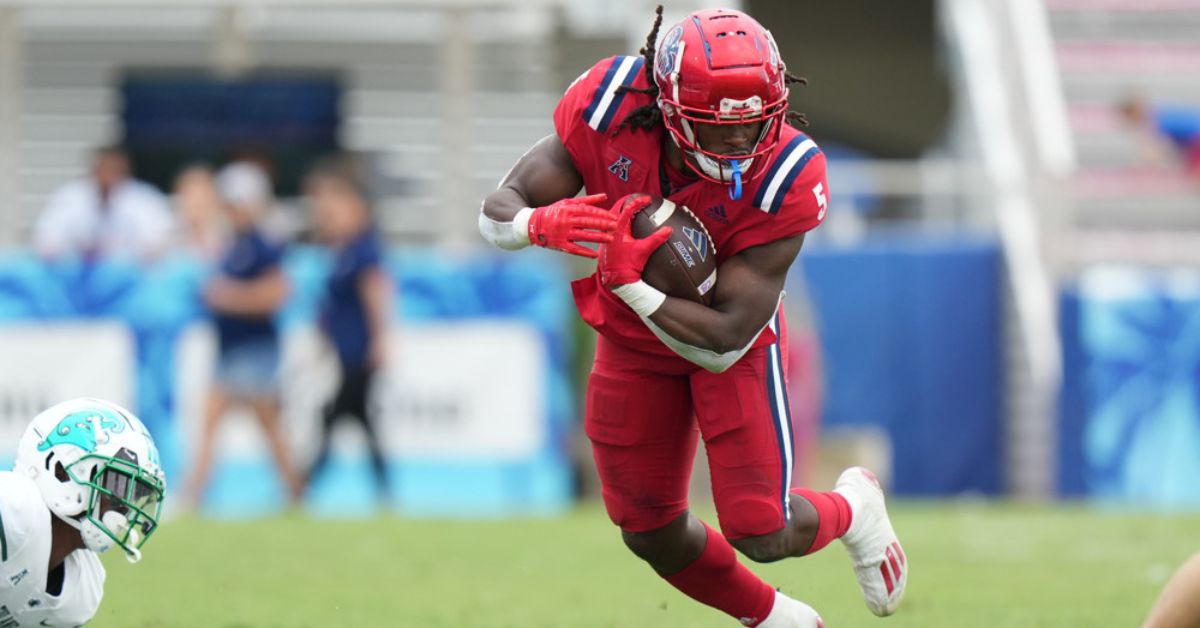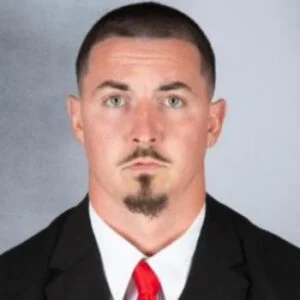College sports forever changed in 2021. The NCAA decided that student athletes should have the ability to transfer from one school to another without eligibility consequences. This new development came as a reaction to the annual, ever-changing coaching carousel, which sees college athletes being left behind at a university when the coach who they originally signed to play for ends up leaving for better financial opportunities. We’ve all seen the coach who publicly promises to stay at said university after a great year…only to see them walk out the door a week later, with a much larger bank account.
Like any business, coaches that perform well can earn bonuses and move to bigger universities—but until 2021, it was only the coaches who had such opportunities. The portal has now shined a light onto the true business side of college sports that the NCAA tried to sweep under the rug. College sports are and always will be a business and transactional, and the NCAA has assured that the players can now benefit and operate in a similar structure as coaches with the emergence of the portal and NIL. This two-part article is not here to debate the ethics of the rule change, but to talk about the realities of this new college athletic landscape. The ripple effects of these new policies have affected much more than just what uniform a given player will wear. Team chemistry, yearly training, athlete evaluation, and disciplinary issues are going to be some of the main points of this two-part series.
The strength and conditioning coach performs much more than a sets and reps job, as we are the head coaches in the offseason. We must guide the culture and immerse our athletes in the organization’s values and standards. This process once took years to manifest itself, but due to the portal and musical chairs situation of our rosters, we now have two teams during the year. Speaking from a football perspective, we now work with:
- Our spring team (post-January portal closure).
- Our actual team (post-May portal closure).
With an extremely high attrition rate, we are now tasked with microwaving culture and training into two-month spans.
Seeing nearly 40% of your roster turning over every six months provides several new problems that—prior to 2021—organizations had years to solve, not months. It is a landscape that no one has a foolproof plan for, and everyone is learning as they go. Adapt or die is the only way to phrase the last two years of navigating this new world of college football—I hope to bring some advice and reflections in this article that have been formulated through experience during this time.
Seeing nearly 40% of your roster turning over every six months provides several new problems that—prior to 2021—organizations had years to solve, not months, says @CoachJoeyG. Share on X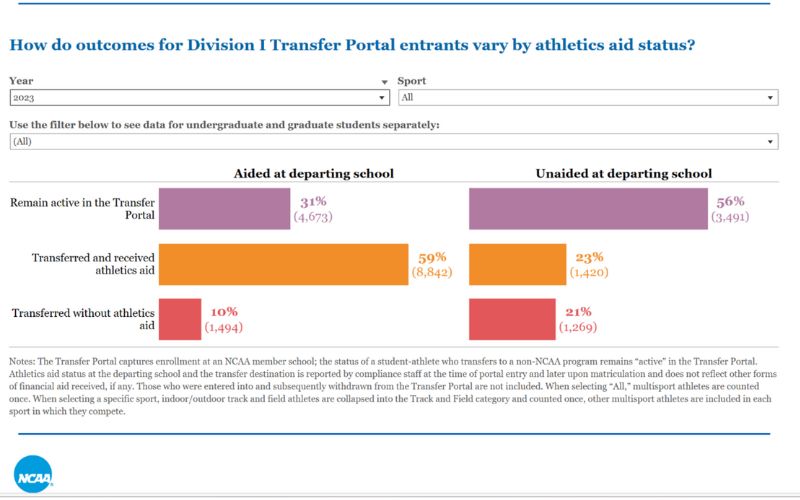
Figure 1. The NCAA has stated that over 20,000 total athletes have entered the portal since the emergence of the transfer rule. Screenshot taken from: Transfer Portal Data: Division I Student-Athlete Transfer Trends – NCAA.org
Meritocracy
America is a garden in which capitalism grows, and no business exemplifies this meritocracy more than professional sports. If you are the cream of the crop in any sport, you get paid like it. The best players in the NFL earn over 30 million dollars a year for their production.
This climate creates both a lot of positives as well as many negatives. It’s cutthroat and raw, which is something that has not been seen to the same degree in the college environment. Pro players hold out for better deals and ask for trades, players get cut for poor performance, and at times will act disgruntled toward management when their contract is not right. The money side brings with it envy and jealousy that can rot locker rooms, but at the same time offers financial freedom to players and their families. These were “grown folks” problems that a lot of coaches avoided by working in college.
That has now changed, with the NCAA creating a free market where players can financially earn and move themselves to better opportunities based on their value, even if that’s at another university. We are witnessing players transfer three-to-four times in their careers, as they chase opportunities that just three years ago were closed off to them when they were stuck to whichever university they signed their NLI (National Letter of Intent). This explosion of new, uncharted dilemmas has every coach reevaluating how to do business in the college realm. This is such a major shake-up in college that it has led prominent head coaches to retire (like Nick Saban) and driven other head coaches to take assistant spots to avoid the added stress of the portal and NIL. Players deserve to be paid their worth and generate financial assets in college, but a uniform model has not officially been figured out—the dust has not settled legislatively within the NCAA due to a continual change in policies.
The uncomfortable truth about the new landscape of the locker is that we must embrace meritocracy and promote an environment in which you do more, you get more. Players need to get paid for production.
The uncomfortable truth about the new landscape of the locker is that we must embrace meritocracy and promote an environment in which *you do more, you get more,* says @CoachJoeyG. Share on XI still remember the days when I played and players were given tee-shirts for outstanding performances and we thought this was exciting and important. This has no comparison to the potential of earning a car or free food, as I would happily trade my shirts for a Dodge Hellcat. As much as we pretend extrinsic, material things don’t motivate us “true competitors,” they definitely do—especially this generation of kids who grew up watching 7-year-olds on Youtube making millions of dollars doing toy comparisons. The self-motivation bit that coaches say athletes should solely rely on to motivate themselves is a scapegoat at times, due to the fact that we couldn’t compensate these players.
Let’s roleplay: you walk into your head coaches’ or AD’s office and they offer you a raise. Would you turn down more money for the love of your job? ABSOLUTELY NOT! Embracing this play for pay mentality not only provides the athletes with extrinsic motivation, it creates a competitive environment internally outside of just playing time. More is at stake than just the total amount of plays in a game for these athletes. The majority of my roster come from lower-middle class to lower-class financial backgrounds, which means these players can help their socio-economic standing NOW, while in college, versus four to five years out from their freshman year. The other bright spot of this is that many players who will not make it to the professional ranks are still paid what they’re worth in college, as again, production drives price.
There are many ways to control and drive the positive side of NIL and the portal. I have heard strategies where collectives pay their starters based on number of snaps played in a game and performance on game days. Players have been paid once they are promoted to starter status, which drives the entire process of preparation. Collectives have incentivized players with good grade clauses and off-season performance bonuses, driving self-discipline and creating healthier long-term habits that will stick much longer than their athletic careers. Players, in my opinion, should know what the value is of a producer at a given position within the organization. That sets the market, which can prevent false information and exaggerated thoughts on different players’ monetary value. This open clarity of price can curtail a lot of locker room issues. It motivates the third string guy who may be a freshman: if I work hard and become a starter, I have X-amount of dollars I will receive.
The downside of a meritocracy is that you earn what you are worth. This means that if the athlete is not providing any value to the team, not only are they not getting paid, but in most cases, they are being walked into the portal. In pro sports, if a player is not adding value to a team, they are cut just like in real everyday life—when a person is not doing their job, they are fired. Prior to 2021, this process of cutting a player was rare and coaches were more committed to the maturity and personal development of their players, because they knew that they were handcuffed to them for the duration of their academic career due to APR points and ramifications for lower graduation rates. Prior to 2021, players in college received more chances before being shown the door.
The combination of a win-right-now mentality from boosters and administrators and the portal has washed the commitment away and made the player-coach relationship transactional; and, in some cases, that relationship is even more of a partnership. Some players make more than coaches on staff. The ability to correct recruiting mistakes, whether the player was over-recruited due to potential athletic talent or not a thorough-enough evaluation on character has increased pressure to perform from the coach directed to the player.
The combination of a ‘win-right-now’ mentality from boosters and administrators and the portal has washed the commitment away and made the player-coach relationship transactional, and in some cases even more of a partnership. Share on XThe benefit I have witnessed with this even more competitive environment is that the floor of each organization has raised more than the ceiling. Believe it or not, there are athletes that make it to the college level and have no more motivation beyond just being on the team. They use the resources provided to the players and have a great time, but do not provide the value that was expected of them when they were first recruited.
The portal has fixed this, because coaches can push the non-achiever types into the portal and have them transfer. This is teaching these players the ruthlessness of the real world. I have witnessed far fewer “steak eaters and bus riders” since the portal opened, as many kids on the chopping block are pushing themselves to stay in the organization for fear of being cut. This has created a more serious training atmosphere and competitiveness throughout the entire organization, with the top-tier players hunting for more money and the bottom-tier players just trying to hold on to their roster spot.
Culture
The word culture has to be the biggest buzzword of the past decade—the way that I define culture is the collective behavior of the organization and all its members. Leaders‘ responsibilities are to guide the behavior of the members of the organization. This has taken on much more importance and is an area that I personally have ventured down in recent years, knowing that leadership is going to be critical in the transfer world we live in. Realizing that just three years ago I may only have 25 new players coming into the program is mind boggling compared to the estimated 120 new athletes I have encountered in the past two years.
The process of educating new players in team culture is now microwaved into half-a-year lengths, when before coaches had several years to make a dent. I have learned and taken so many things from Brian and Tim Kight, but the biggest concept that resonates with me is their performance pathway. This performance pathway is an under-the-hood view on how changing behaviors on a mass level affects performance and productivity.

Figure 2. This graphic, inspired by Brian Kight, shows how organizations, both good and bad, operate. If the behaviors of the members of the organization do not support the culture of winning and success, there is no shot that the organization will consistently perform to its potential. What is the Performance Pathway? (tbriankight.com)
Culture is not some soft and cuddly idea where everyone has to love each other and be best friends. Very simply, cultures that are successful get the majority of their members to buy into the standards and values that support the behavior that produces success.
Very simply, cultures that are successful get the majority of their members to buy into the standards and values that support the behavior that produces success, says @CoachJoeyG. Share on XThis shortened education period has forced the stripping away of unnecessary items from the equation. A deeper exploration into the teaching materials that we have instituted at FAU over the years revealed that we had way too many avenues and ideas we were trying to impart to these athletes. One day we sat down and, after some brainstorming, we wrote down one question: Does it change behavior in a positive way?
If behavior is not changing, then your leadership and model of culture is not working. This is why we leaned on the performance pathway to clarify our message and expectations to the team. The way that the Kights teach culture is very applicable to the current state of college athletics because it provides two core themes, regardless of whether you’ve been on the team for one day or five years:
- Clarity—exactly how you are required to operate.
- Purpose—your role is needed for us to be successful and you need to be good at it.
These two themes must be taught and echoed throughout the building by all members of the organization—and now more than ever as teams are shaped in months, not years, due to the portal and influx of new additions to the roster.
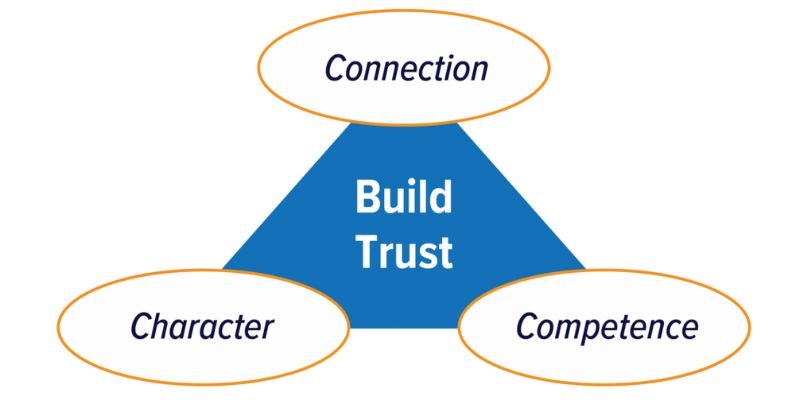
Figure 3. The three C’s to build trust.
The three C’s are an easy way to build trust within the organization:
- Connection—You have to spend time with your players.
- Character—You have to act in a way that exemplifies the behavior you are looking for.
- Competence—You have to be good at your job.
Nowadays, it is very rare to have a four-year senior who has spent the entire duration of their career with one coaching staff. In my 5 year tenure here at FAU, I have seen two head coaches and over twelve assistant coaches pass through these doors. Coaching continuity is a thing of the past. I estimate, based on my observations as I’m now 15 years into my career, that the average tenure of coaches at a given university is between 2 and 3 years. It takes years, however, to really learn and build trust with athletes. Combine the revolving door of coaches with an attrition rate of rosters at over 50%, and aligning members of an organization is damn near impossible.
The how in what we do must be spoken about and taught everyday as strength coaches—some even define our jobs as the ministers of culture. We must bombard the team with clear and actionable expectations daily, and provide corrections when necessary. Having a curriculum on how to teach and instill the values of the organization is a must, as you are starting from scratch literally every six months.
Having a curriculum on how to teach and instill the values of the organization is a must, as you are starting from scratch literally every six months, says @CoachJoeyG. Share on XThis curriculum allows my staff and players to constantly be immersed in our team’s culture and be able to talk about it and explain it to others. With the constant change in our roster, it is our responsibility as coaches to get the “new guys” up to speed; not just with how we operate in the facility, but also in terms of our program’s principles and standards. This provides an opportunity to demonstrate our competence and character as coaches, that we know our team’s culture and that we live and coach it as well.
The presumptive leaders on the team are also encouraged to take part in this process—they are responsible for getting the new guys up to speed as well, because there is no time to backtrack in our training or in our culture. Everything we do or say as individuals will affect our team’s culture, so if there is someone that is not up to speed or does not fully understand how we operate, it can potentially be cancerous to our program. This gives the leaders on our team an opportunity as well to present themselves as those types of captains and learn how to be a competent and confident leader for the entire group.
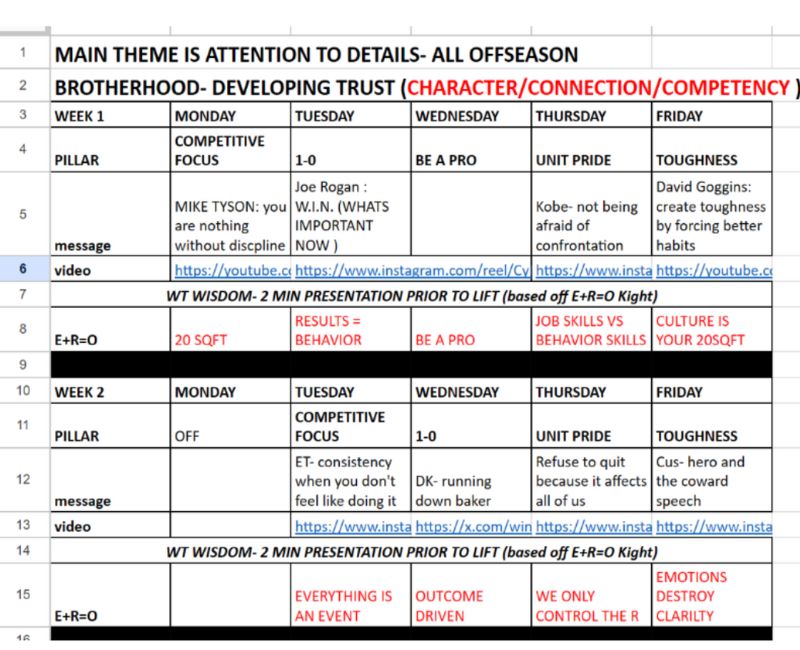
Figure 4. Our cultural blueprint is used to guide the learning process of our organization’s standards and values. Our head coach sets the values, and it is everyone’s responsibility to teach and enforce them.
Discipline
Long gone are the days of “The Junction Boys” and physical punishment. Not only is it ineffective, but those methods are unsafe and can cause players to leave your program. The golden rule of strength and conditioning is do no harm, which is the complete opposite of running a kid till he pukes—not to mention, after he hits the trash can, you will be running him straight into the portal as well. This may not seem like an issue until the player that you run off is valued at double your salary in NIL and was the potential starter next year.
In no way am I advocating for players to be free from facing consequences if they violate the values of a program. What I am advising—and have done personally—is sit down with my head coach and figure out what rules are necessary, and what rules we can eliminate due to their low level of impact on wins and losses. This creates a feeling of professionalism and autonomy with the players in an era that is dominated by the ability to transfer to another school. This trimming of the fat has prevented headaches due to discipline issues without impacting our team’s attendance, GPA, overall attitudes, and performance where it matters: on the field. Not making mountains out of molehills allows the athletes to keep the main thing the main thing—instead of worrying what color socks they should be wearing, they can now have the mental equity to focus on that day’s installation.
That being said, coaches still need to draw their lines in the sand. Unlike previous eras, where it would take a lot to be kicked off a team, players that cross that line are easily disposable and are aware of this fact. Sitting down with your head coach and defining the non-negotiables, then providing your players the structure necessary to avoid these will clearly define how to be successful in the program. Every coach will have their one or two pet peeves, so being flexible and supportive is the strength and conditioning coach’s responsibility.
Prior to the emergence of the portal, the main driver of discipline was playing time—which is directly controlled by the position coach and coordinators. The athletes termed “can’t get rights” are only affected by the threat of riding the pine. Since the transfer rule has been set, the “my way or the highway” implementation of discipline has definitely changed: athletes are now driven by playing time and money. With any business contract, character clauses are not unheard of; if these kids are going to operate as pros, we should treat them as such and specify these expectations on behavior in the contracts. I have heard of clauses in NIL contracts that have behavior amendments and incentives. The one major benefit with discipline that the portal has created is an uptick in maturity due to the professionalism accompanied by the contracts some athletes sign.
This new level of maturity and lack of disciplinary issues only helps us as coaches create and sustain a healthy, competitive environment—strength staff now don’t always have to worry about discipline and what type of socks this kid is wearing. Instead, the focus is on how we can get everything we need out of our athletes each day.
This also helps us build relationships in the short amount of time we have—if we are always nitpicking and poking at our guys for little things that do not relate to football, we are not focusing on them as a person and it puts a wall up when trying to build that relationship. The fewer problems we have with discipline, the more we can invest in the players with our time and positive energy. They are then able to see that, and the foundations for building that relationship are put in place. These relationships are one of the most important parts of coaching, because without that piece, we cannot coach our athletes hard and we do not build the trust we need. Having more mature and motivated athletes coming in allows us to cut out all the distractions and disciplinary nonsense and instead focus on what matters.
The fewer problems we have with discipline, the more we can invest in the players with our time and positive energy, says @CoachJoeyG. Share on XFinal Thoughts
The world of college sports has been flipped upside-down by the rule changes pertaining to NIL and the transfer portal, with a professional model now being adapted by colleges and universities. Contract disputes are no longer only reserved for pro athletes. This new landscape provides a novel thought process as it relates to the culture and training of student athletes.
This article covered the non-training issues that have arrived post transfer and NIL rule changes. The next article in this series will address the training considerations and alterations that must be made in the “free agent era” of college sports. There are no absolutes—and every situation is unique—but I hope that this article provides some knowledge and advice about succeeding in the difficult job held by the strength and conditioning coach.
Lead Photo by Peter Joneleit/Icon Sportswire.
Since you’re here…
…we have a small favor to ask. More people are reading SimpliFaster than ever, and each week we bring you compelling content from coaches, sport scientists, and physiotherapists who are devoted to building better athletes. Please take a moment to share the articles on social media, engage the authors with questions and comments below, and link to articles when appropriate if you have a blog or participate on forums of related topics. — SF

